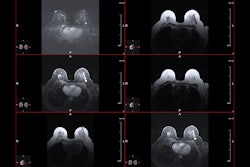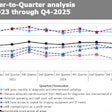Poverty, environmental risks, lack of housing, and physical inactivity are the most common community-level predictors of disparities in cancer screening, prevalence, and deaths in the U.S., researchers have reported.
A team from the Harvey L. Neiman Health Policy Institute (HPI) also created interactive "disparity maps" that have been posted on HPI's website to "illustrate where poor outcomes and high-risk conditions overlap, offering actionable insights for researchers, policymakers, government agencies, and health systems." The group's findings were published on October 23 in JAMA Network Open.
"For the four most prevalent cancers in the U.S. -- breast, colorectal, lung and prostate -- we now know that community conditions like tobacco use, air pollution, insurance coverage, housing and environmental mitigation are critical for understanding the cancer screening gaps, excess prevalence, and preventable deaths that afflict many communities," said contributing author and HPI Executive Director Elizabeth Rula, PhD, in a statement.
Lead author and HPI senior analyst Alexandra Drake and colleagues developed a machine-learning model to rank 24 county-level factors by their importance for explaining differences in cancer screening, prevalence, and mortality rates. The team based screening and prevalence rates for each type of cancer on a national 5% sample of Medicare fee-for-service beneficiaries from the year 2020 and culled five-year mean mortality rates (2016 to 2020) from the National Cancer Institute's State Cancer Profiles database.
They found that poverty was "the most consistently important predictor of community cancer outcomes across cancer types," but that environmental and housing factors were also key.
"Environmental risks, including air toxins, were also high ranking, as were housing issues and physical inactivity, revealing critical focus areas to maximize public health impact," Drake said.
Air pollution was the most influential factor for prostate cancer screening. Not surprisingly, it was also a strong predictor for lung cancer, a finding that outranked county smoking rates, the investigators explained. They wrote that "these results highlight the importance of prevention via tobacco control and environmental mitigation, and the need to expand lung cancer screening to save lives."
Drake and colleagues reported that the second most important factor for adherence to lung cancer screening was patient access to primary care physicians, and found that "community conditions and socioeconomics were among top factors for every type of cancer and outcome," noting that "the rate of severe housing problems, including overcrowding and high housing costs, were of high importance for … cancer prevalence."
The study and the development of the online tool were supported by cancer prevention and health equity experts as well as the Amazon Web Services (AWS) Health Equity Initiative and the Radiology Health Equity Coalition, according to the authors.
Drake's group hopes that the disparity maps will help "prioritize and unify efforts to reduce the greater burden of cancer carried by some communities and groups."
"These powerful data can help align funding with local needs to maximize public-health impact and rectify inequities," concluded Carla Braithwaite, executive director of the Radiology Health Equity Coalition, in the HPI statement.
The complete study can be found here.




















